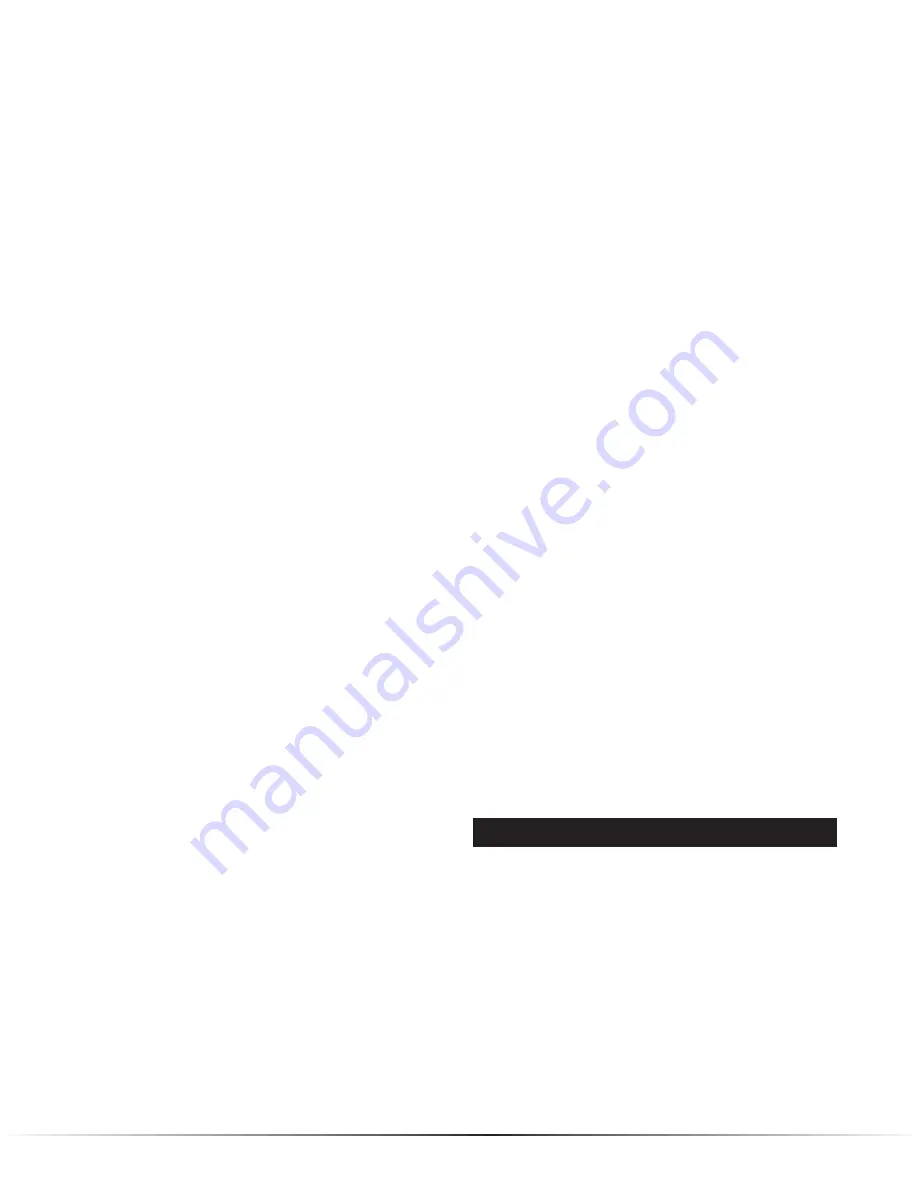
12
|
Dresser
Setting the Under Pressure Set-Point
1. Remove the cover on top of the under pressure spring
case which can be identified by the gold Under Pressure
Protection Spring Range label. Loosen the set point
adjusting screw located on top of the spring case.
2. If the slam shut valve is closed, it will need to be opened.
To open the valve ,first equalize the pressure across the
flapper valve and bleed off the sense pressure. Then
using a 1/2 inch SAE or 13 MM wrench turn the flapper
lever counter clockwise into the latched position. Hold
the flapper lever in the latched position until the actuator
pressure bleeds off and the pawl lever latches the flapper
lever.
3. Adjust the sense pressure to the required over pressure
set-point.
4. Adjust the under pressure set-point by loosening the
adjusting screw until the slam shut closes. When the
slam shut closes, the controller is set at the approximate
set point.
5. Open the slam shut valve by equalizing the pressure
across the flapper valve. Then using a 1/2 inch SAE or 13
MM wrench turn the flapper lever counter clockwise into
the latched position. Hold the flapper lever in the latched
position and increase the sense pressure over the under
pressure set-point. When the pressure is high enough
the top of the pawl lever will rotate to the left and latch the
flapper lever.
6. Slowly decrease the sense pressure until the slam shut
valve closes noting the pressure it closes at. Adjust the
set-point if required and tighten the locknut.
7. Repeat steps 5 and 6 until the slam shut valve repeatedly
closes at the required pressure. Install the cover over the
adjusting screw.
Testing
1. Testing Regulator Lockup:
Once the slam shut valve and the regulator are set up
lock up can be tested on the regulator. The regulator
should be tested for lockup according to the regulator’s
Installation, Operation and Maintenance Manual. The
slam shut valve must be in the open position during the
regulator lockup test.
2. External Leak Test:
Pressurize the slam shut with the valve in the latched
open position. Apply a bubble solution to the outside of
the valve assembly.
Requirements:
The valve exterior shall be bubble tight
for two minutes minimum.
3. Internal Leak Test:
Install a gage downstream of the slam shut in the line to
detect leakage as evidenced by the pressure increasing.
Open the upstream block valve; close the downstream
block valve. With the slam shut valve open make sure gas
is flowing downstream of the slam shut. If required adjust
the regulator so gas will flow through it. On the Flowgrid
®
regulators this can be accomplished by backing off the
pilot set point adjusting screw. Remove the cover from
the front of the controller. Close the slam shut by inserting
a flat bladed screw driver under the bottom of the pawl
lever and lifting. The flapper valve should close. Bleed
the pressure off downstream of the slam shut. Install the
cover on the controller and latch module. Pressurize the
slam shut inlet to 15 psig minimum or higher pressure as
desired. Monitor the pressure gage downstream of the
slam shut for two minutes minimum.
Requirements:
The pressure should remain at zero psig.
Startup and Operation
1. The slam shut valve will need to be open in order to do
startup. Once the slam shut is open follow the startup
procedures in the pilot and regulator IOM.
2. For slam shuts equipped with only over pressure protec-
tion the slam shut can be opened by: First equalizing the
pressure across the flapper valve and bleeding off the
sense pressure. Then using a 1/2 inch SAE or 13 MM
wrench turn the flapper lever counter clockwise into the
latched position. Hold the flapper lever in the latched
position until the actuator pressure bleeds off and the
pawl lever latches the flapper lever.
3. If the slam shut is equipped with under pressure protec-
tion the slam shut can be opened by: First equalizing the
pressure across the flapper valve and bleeding off the
sense pressure. Then using a 1/2 inch SAE or 13 MM
wrench turn the flapper lever counter clockwise into the
latched position. Hold the flapper lever in the latched
position and increase the sense pressure over the under
pressure set-point. When the pressure is high enough
the top of the pawl lever will rotate to the left and latch the
flapper lever.
Maintenance
The slam shut parts are subject to normal wear and must be
inspected and replaced as they become worn. The frequency
of the inspection and replacement of the parts depends on the
severity of the service conditions and the applicable government
regulations and requirements.
Inspect all parts for wear and damage. Replace all worn and
damaged parts as necessary. Replace all seals when rebuild-
ing the slam shut Valve Assembly. Refer to the parts list for
identification of parts and the order they are installed.
WARNING
Before disassembly make sure the slam shut and op-
tional integrated regulator have been isolated by closing
upstream and downstream block valves. Safely release
the pressure in the lines. Failure to complete these steps
may result in personal injury and property damage.
Refer to the parts list for the appropriate part names, number
and rebuild kits required to disassemble and reassemble the
regulators, shut-off valves and controllers. The exploded
diagrams should also be used as a reference to these
instructions

























